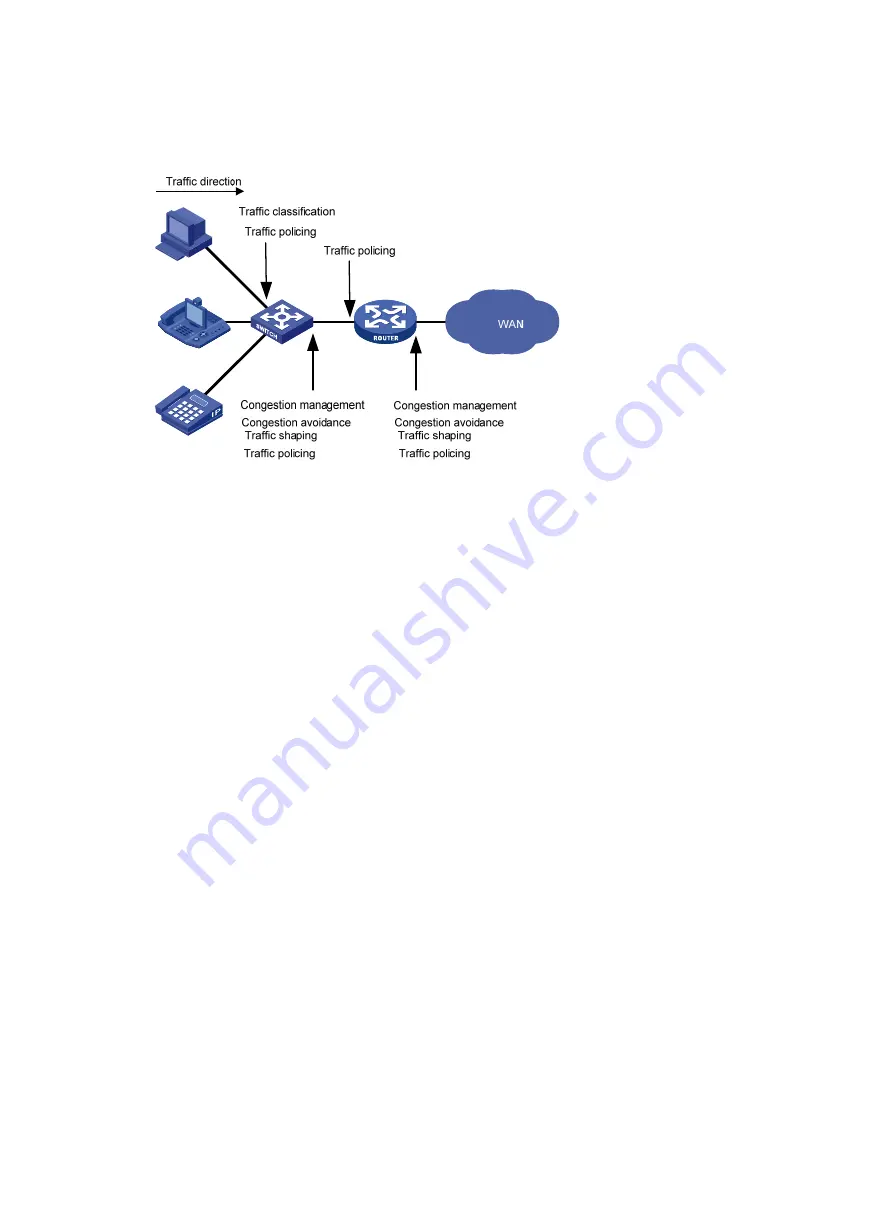
16
Deploying QoS in a network
Figure 3 Position of the QoS techniques in a network
As shown in
, traffic classification, traffic shaping, traffic policing, congestion management,
and congestion avoidance mainly implement the following functions:
•
Traffic
classification
—Uses certain match criteria to assign packets with the same
characteristics to a class. Based on classes, you can provide differentiated services.
•
Traffic
policing
—Polices flows entering or leaving a device, and imposes penalties on traffic
flows that exceed the preset threshold to prevent aggressive use of network resources. You can
apply traffic policing to both incoming and outgoing traffic of a port.
•
Traffic
shaping
—Proactively adapts the output rate of traffic to the network resources
available on the downstream device to eliminate packet drops. Traffic shaping usually applies to
the outgoing traffic of a port.
•
Congestion
management
—Provides a resource scheduling policy to determine the packet
forwarding sequence when congestion occurs. Congestion management usually applies to the
outgoing traffic of a port.
•
Congestion
avoidance
—Monitors the network resource usage, and is usually applied to the
outgoing traffic of a port. When congestion worsens, congestion avoidance reduces the queue
length by dropping packets.
QoS processing flow in a device
briefly describes how the QoS module processes traffic:
1.
Traffic classifier identifies and classifies traffic for subsequent QoS actions.
2.
The QoS module takes various QoS actions on classified traffic as configured, depending on
the traffic processing phase and network status. For example, you can configure the QoS
module to perform traffic policing for incoming traffic, traffic shaping for outgoing traffic,
congestion avoidance before congestion occurs, and congestion management when
congestion occurs.
















































